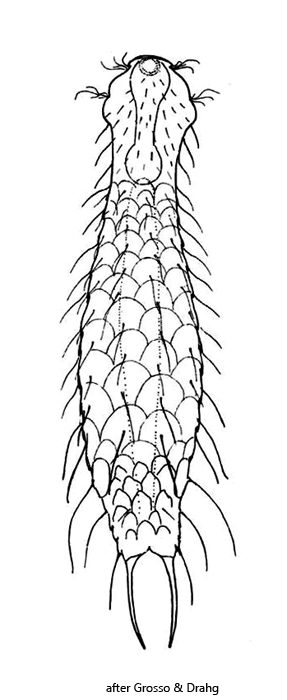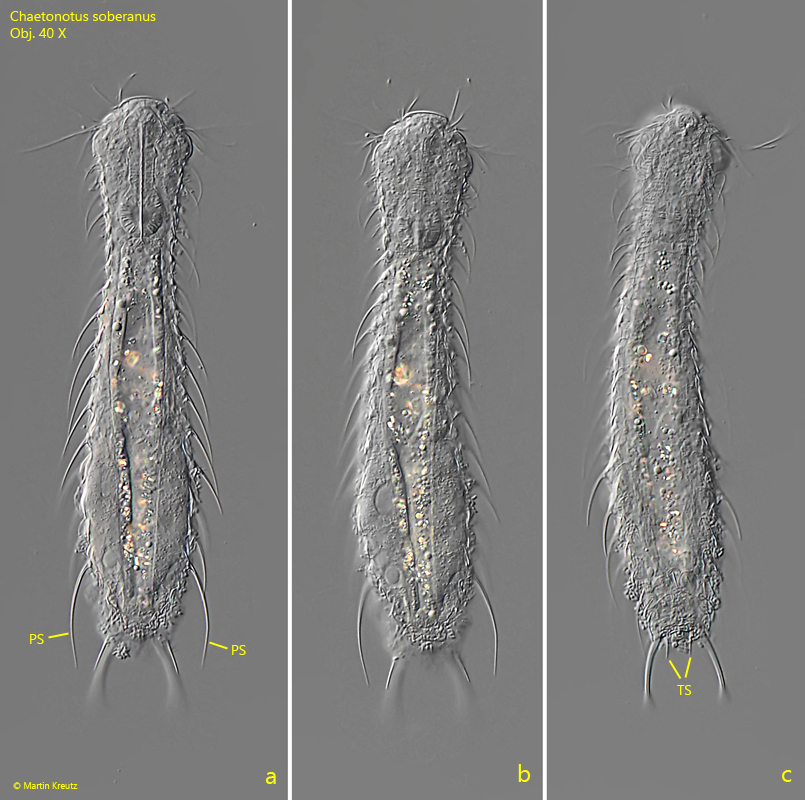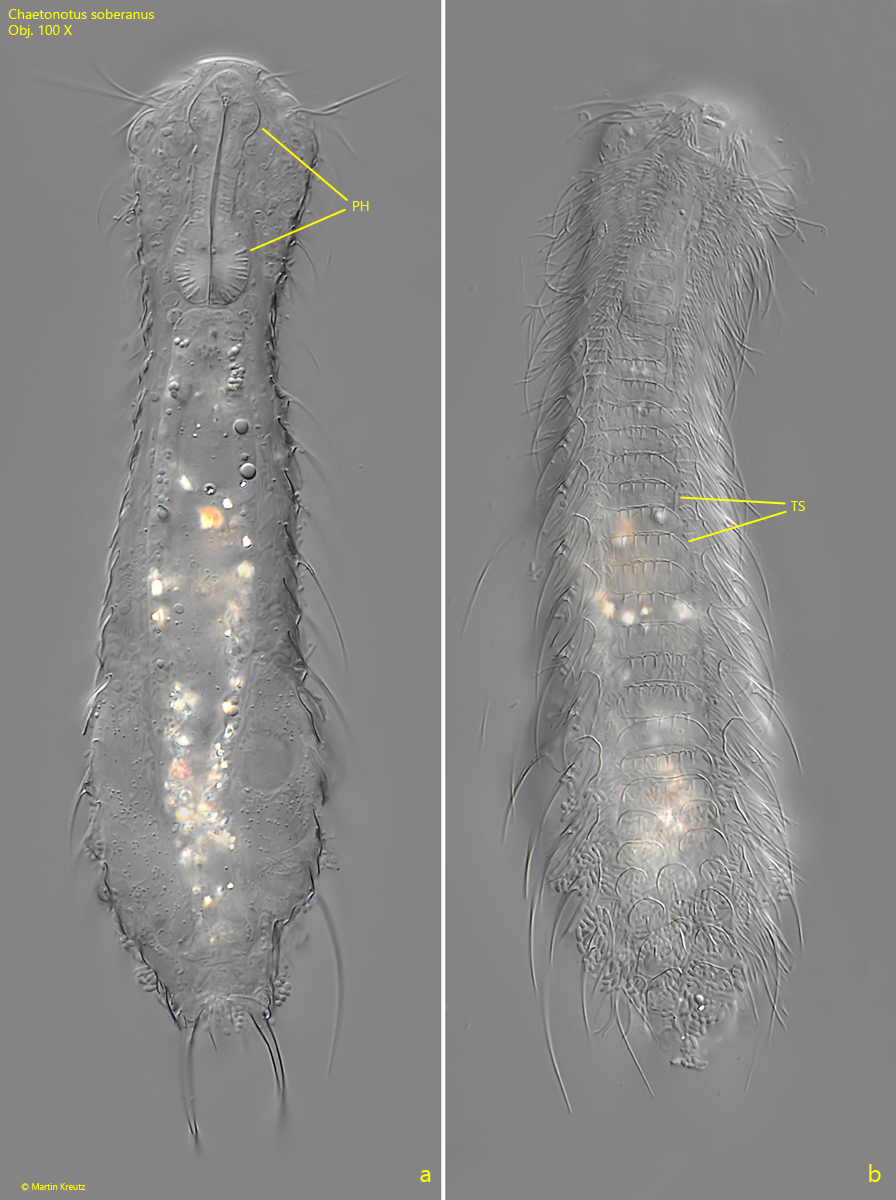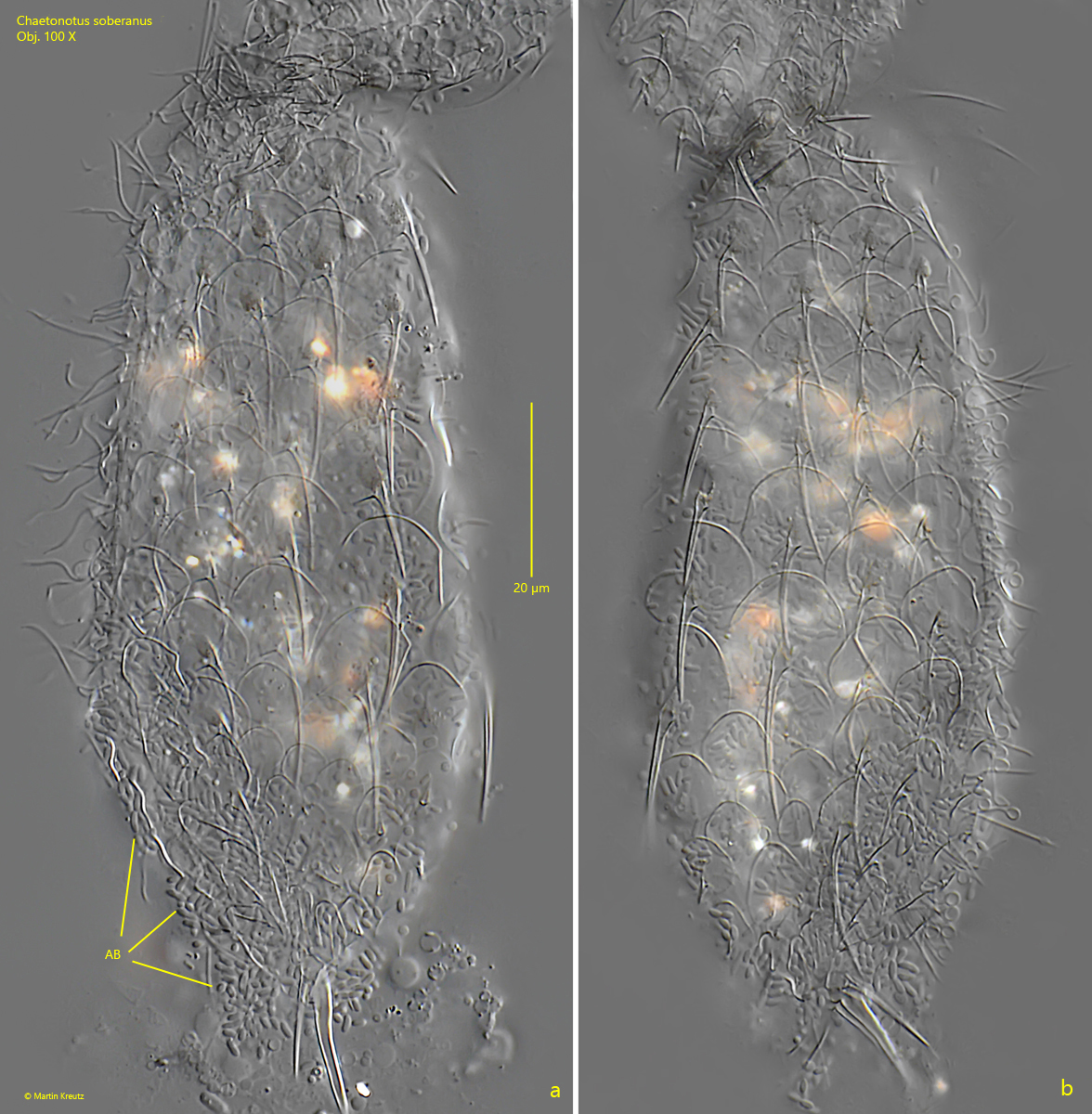Chaetonotus soberanus (Grosso & Drahg, 1983)
Most likely ID: n.a.
Synonym: n.a.
Sampling location: Simmelried
Phylogenetic tree: Chaetonotus soberanus
Diagnosis:
- body shoe-shaped, relatively slender, small
- length about 152 µm
- head five-lobed, posterior pleural lobes more developed
- pharynx dumbbell-shaped
- four lateral ciliate tufts
- hypostomium absent
- two pairs of dorsal setolae
- adhesive tubes elongated and pincer-like pointed
- dorsal neck with crescent-shaped to round scales with short straight simple spines
- dorsal trunk with round to broadly oval scales with straight spines
- scales in girdle region enlarged
- behind the girdle scales much smaller with short spines
- a pair of 30 µm long, parafurcal spines
- posterior five transverse rows of keeled scales
- ventral ciliary bands are separated
- anterior two thirds of ventral side with transverse plates with jagged anterior ornamentation
- posterior third of ventral side covered with roundish and oval with keel
- two terminal ventral scales with short but distinct spines

So far I have only found one specimen of Chaetonotus soberanus in December 2022 in an old sample of mud from the Simmelried. However, it is possible that I have overlooked other specimens so far.
Chaetonotus soberanus was first described by Grosso & Drahg in Argentina in 1983. Subsequently, the species was recorded in 2013 by Kånneby in Sweden, who also only found 1 specimen. No further records have been documented to date.
I only found the specimen after I had already placed a coverslip on it. I found the specimen still freely swimming (s. fig. 1 a-c). After reducing the layer thickness, it was fixed with the ventral side facing the coverslip. The anterior two thirds of the ventral side are covered with transversal scales with a jagged ornamentation, while the posterior third is covered with roundish, keeled scales (s. fig. 2 b). This arrangement is characteristic of Chaetonotus soberanus. In order to view the dorsal side, I tried to turn the specimen under the coverslip, whereby it twisted slightly. Nevertheless, I was able to recognize the dorsal arrangement of the scales (s. fig. 3 a-b). The larged round scales are in the middle of the trunk. Towards the posterior end, they become smaller. I could not recognize their exact shape because the layer thickness of the sample could not be further reduced.
Chaetonotus soberanus is probably identical with the species Chaetonotus macrolepidotus macrolepidotus. This species was raised by Kisielewski because he considered the species Chaetonotus ophiogaster and Chaetonotus macrolepidotus to be synonymous. Chaetonotus macrolepidotus macrolepidotus is said to have the ventral scale pattern of Chaetonotus ophiogaster and the dorsal scale pattern of Chaetonotus macrolepidotus. In my opinion, however, Chaetonotus soberanus is much better defined and also confirmed by the new description by Kånneby (2013). It also coincides with the characteristics of my specimen, which is why I consider the specimen to be Chaetonotus soberanus.

Fig. 1 a-c: Chaetonotus soberanus. L = 165 µm. A freely swimming specimen from ventral. Note the two long parafurcal spines (SP) and the pair of short terminal spines (TS) between the furca. Obj. 40 X.

Fig. 2 a-b: Chaetonotus soberanus. L = 165 µm. Two focal planes of the specimen as shown in fig. 1 a-c from ventral. Note the dumbell-shaped pharynx (PH) and the transversal scales (TS) with a jagged ornamentation. Obj. 100 X.

Fig. 3 a-b: Chaetonotus soberanus. Two focal planes of the dorsal side. AB = adhering bacteria. Obj. 100 X.